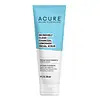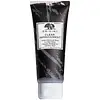What's inside
What's inside
 Key Ingredients
Key Ingredients

 Benefits
Benefits

 Concerns
Concerns

 Ingredients Side-by-side
Ingredients Side-by-side

Water
Skin ConditioningKaolin
AbrasiveButyrospermum Parkii Butter
Skin ConditioningGlycerin
HumectantGlyceryl Stearate Se
EmulsifyingVitis Vinifera Seed Oil
EmollientBentonite
AbsorbentMethyl Glucose Sesquistearate
EmollientCetearyl Alcohol
EmollientCandelilla/Jojoba/Rice Bran Polyglyceryl-3 Esters
EmulsifyingGlyceryl Stearate
EmollientCI 77499
Cosmetic ColorantEthylhexylglycerin
Skin ConditioningSodium Stearoyl Lactylate
EmulsifyingXanthan Gum
EmulsifyingCaprylyl Glycol
EmollientPhenylpropanol
MaskingPropanediol
SolventCitric Acid
BufferingCharcoal Powder
AbrasiveCitrus Limon Peel Oil
MaskingCitrus Aurantium Dulcis Peel Oil
MaskingEugenia Caryophyllus Bud Oil
MaskingPrunus Amygdalus Dulcis Oil
Skin ConditioningTocopherol
AntioxidantSodium Citrate
BufferingWater, Kaolin, Butyrospermum Parkii Butter, Glycerin, Glyceryl Stearate Se, Vitis Vinifera Seed Oil, Bentonite, Methyl Glucose Sesquistearate, Cetearyl Alcohol, Candelilla/Jojoba/Rice Bran Polyglyceryl-3 Esters, Glyceryl Stearate, CI 77499, Ethylhexylglycerin, Sodium Stearoyl Lactylate, Xanthan Gum, Caprylyl Glycol, Phenylpropanol, Propanediol, Citric Acid, Charcoal Powder, Citrus Limon Peel Oil, Citrus Aurantium Dulcis Peel Oil, Eugenia Caryophyllus Bud Oil, Prunus Amygdalus Dulcis Oil, Tocopherol, Sodium Citrate
Water
Skin ConditioningMyrtus Communis Leaf Water
MaskingKaolin
AbrasiveBentonite
AbsorbentButylene Glycol
HumectantMontmorillonite
AbsorbentPolysorbate 20
EmulsifyingPEG-100 Stearate
Charcoal Powder
AbrasiveXanthan Gum
EmulsifyingLecithin
EmollientPEG-150 Distearate
EmulsifyingPropylene Glycol Stearate
Skin ConditioningSorbitan Laurate
EmulsifyingGlycerin
HumectantPropylene Glycol Laurate
Skin ConditioningSimethicone
EmollientCaprylyl Glycol
EmollientEthylhexylglycerin
Skin ConditioningHexylene Glycol
EmulsifyingTrisodium EDTA
Dehydroacetic Acid
PreservativePhenoxyethanol
PreservativeWater, Myrtus Communis Leaf Water, Kaolin, Bentonite, Butylene Glycol, Montmorillonite, Polysorbate 20, PEG-100 Stearate, Charcoal Powder, Xanthan Gum, Lecithin, PEG-150 Distearate, Propylene Glycol Stearate, Sorbitan Laurate, Glycerin, Propylene Glycol Laurate, Simethicone, Caprylyl Glycol, Ethylhexylglycerin, Hexylene Glycol, Trisodium EDTA, Dehydroacetic Acid, Phenoxyethanol
 Reviews
Reviews

Ingredients Explained
These ingredients are found in both products.
Ingredients higher up in an ingredient list are typically present in a larger amount.
Bentonite is an aluminium phyllosilicate clay with great absorbent properties. The name 'bentonite' comes from the area where the largest source is found: Fort Benton, Wyoming.
As a clay, bentonite is often used to absorb excess oil and provide exfoliation. It has also been shown to have some antibacterial and anti-inflammatory properties. Studies show bentonite was effective at calming dermatitis from poison ivy and in diaper dermatitis of infants. Bentonite has also been shown to act as a barrier against toxic compounds on your skin.
Sunscreens containing bentonite display higher water resistance and stay on the skin for much longer. The sunscreens containing bentonite also show higher potency and UV light absorbtion.
Bentonite is naturally created from volcanic ash and several natural weathering/hydrothermal processes.
A common usage of bentonite is removing excess protein from white wines. Bentonite contains a property of being able to absorb large amounts of protein from aqueous solutions.
Phyllosilicate clay has a structure formed by sheets.
Learn more about BentoniteCaprylyl Glycol is a humectant and emollient, meaning it attracts and preserves moisture.
It is a common ingredient in many products, especially those designed to hydrate skin. The primary benefits are retaining moisture, skin softening, and promoting a healthy skin barrier.
Though Caprylyl Glycol is an alcohol derived from fatty acids, it is not the kind that can dry out skin.
This ingredient is also used as a preservative to extend the life of products. It has slight antimicrobial properties.
Learn more about Caprylyl GlycolCharcoal powder comes from grounded charcoal. Charcoal can originate from peat, bamboo, coal, wood, coconut shell, or petroleum.
This ingredient has absorbent properties, making it great at absorbing oil.
Ethylhexylglycerin (we can't pronounce this either) is commonly used as a preservative and skin softener. It is derived from glyceryl.
You might see Ethylhexylglycerin often paired with other preservatives such as phenoxyethanol. Ethylhexylglycerin has been found to increase the effectiveness of these other preservatives.
Glycerin is already naturally found in your skin. It helps moisturize and protect your skin.
A study from 2016 found glycerin to be more effective as a humectant than AHAs and hyaluronic acid.
As a humectant, it helps the skin stay hydrated by pulling moisture to your skin. The low molecular weight of glycerin allows it to pull moisture into the deeper layers of your skin.
Hydrated skin improves your skin barrier; Your skin barrier helps protect against irritants and bacteria.
Glycerin has also been found to have antimicrobial and antiviral properties. Due to these properties, glycerin is often used in wound and burn treatments.
In cosmetics, glycerin is usually derived from plants such as soybean or palm. However, it can also be sourced from animals, such as tallow or animal fat.
This ingredient is organic, colorless, odorless, and non-toxic.
Glycerin is the name for this ingredient in American English. British English uses Glycerol/Glycerine.
Learn more about GlycerinKaolin is a clay. It is used for oil control and to help minimize pores. Like other clays, kaolin has the ability to absorb excess sebum or oil. This can help clean out pores and mattify the skin.
Some types of kaolin may have exfoliating properties. When water is added to kaolin, it becomes a paste with small abrasive particles.
Most kaolin is a white color, but may be pink/orange/red depending on where it comes from.
The name 'kaolin' comes from a Chinese village named 'Gaoling'. Kaolin clay comes from rocks rich in kaolinite. Kaolinite, the mineral, has a silicate layered structure. Kaolinite is formed from chemical weathering of aluminum siilicate minerals.
Besides skincare, kaolin is commonly used to make glossy paper, in ceramics, toothpaste, and as medicine to soothe stomach issues.
Learn more about KaolinWater. It's the most common cosmetic ingredient of all. You'll usually see it at the top of ingredient lists, meaning that it makes up the largest part of the product.
So why is it so popular? Water most often acts as a solvent - this means that it helps dissolve other ingredients into the formulation.
You'll also recognize water as that liquid we all need to stay alive. If you see this, drink a glass of water. Stay hydrated!
Learn more about WaterXanthan gum is used as a stabilizer and thickener within cosmetic products. It helps give products a sticky, thick feeling - preventing them from being too runny.
On the technical side of things, xanthan gum is a polysaccharide - a combination consisting of multiple sugar molecules bonded together.
Xanthan gum is a pretty common and great ingredient. It is a natural, non-toxic, non-irritating ingredient that is also commonly used in food products.
Learn more about Xanthan Gum